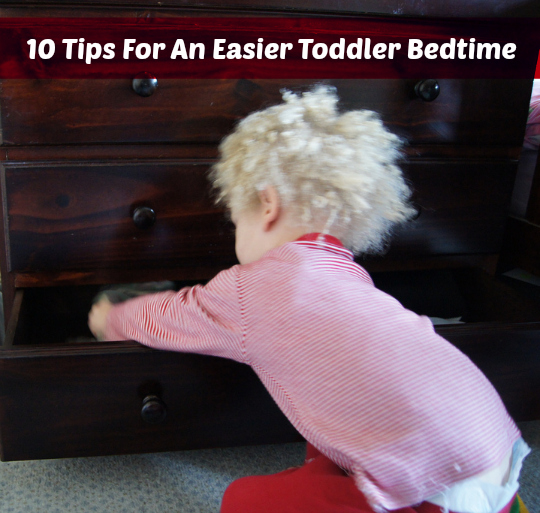Although the title states that the tips are for toddlers, they can really be applied to children of all ages. All families are different and I think the most important thing you can do is find a routine that works for you and your family, so the end of the day ends quietly and calmly.
I have found that setting a bedtime routine early on with children, makes life so much easier as they grow and start to want to have more influence over their life. Here are 10 tips which have made bedtime easier for our family:
(1). Aim for same time.
I have found that by starting the bedtime routine process at similar time each night breeds familiarity and therefore ease of manageability with the children.
(2). Have a routine.
The exact components and order of a bed time routine may differ from family to family, but most families I know find having some type of routine that leads up the bed time process incredibly helpful. Each component act as a cue for the child that the end of their day is winding down.
Our routine is dinner, bath, brush teeth, toilet, story, song and sleep.
(3). Read a story.
I have found this to be such an enjoyable part of the bed time routine for me and my children. Days can be very busy and it is easy for them to pass by without the time to read a story. By having it as part of our bed time routine (this includes the routine for day sleeps for the toddler as well) it makes sure that we do read a story together every day.
(4). Calm atmosphere.
I love music and so do my children and sometimes it will be on quite loud. As we start our bed time routine, I make sure that if music is on, it is on quietly and that it is of the calming variety not something that will hype them up.
(5). Room prepared.
Once we enter the bedroom for their story time, I have found that this is not the ideal time to tidy the room and make sure the beds are made etc. This needs to be done well before so once we enter the room, it is for the final wind down stage of the day – not a whirl wind of activity to get the area ready for sleep.
(6). Water and Toileted.
I have found that children very quickly develop tactics for delaying the sleeping process if they feel so inclined. I try to cover of most of these areas before entering the bedroom, so they cannot be used. Going to the toilet and a small drink of water are essential parts of my strategy to prevent the yoyo-ing in and out of bed that toddlers/preschooler sometimes love to do.
(7). Show Affection.
After the end of a long day it can be tempting to want to shove the kids into bed as quickly as possible! 🙂 I find that the results from this are not optimal and that it is worth taking those extra minutes to have a cuddle and make the bedtime process a warm one.
I find that story time provides the perfect opportunity for this and with my younger two, we all hop into the preschooler’s bed. The toddler sits on me knee and I have my arm around the preschooler and we read the story huddled closely together.
(8). Darken Room.
Now that we have hit daylight savings time in Victoria (Australia), by the time the children’s bed time comes around, it is starting to be quite light. To make it easier for them to get off to sleep, I shut all curtains and blinds to darken the room as much as possible.
(9). Consistency.
I have deliberately left this point and the next to last, due to the fact that they contradict each other! I find it is essential to have consistency with the bedtime routine with little children. For example I read one longer story to my preschooler, but two smaller books to my toddler each night. The toddler sometimes will try and push another book under my nose, but I like to remain consistent and reinforce that he has had his two stories and that it is now time for sleep. Varying from one night to another is confusing for him and he is not able to understand where the boundary is.
(10). Flexibility.
This is the complete opposite of what I have just explained above, but like with all parenting I think there is certain circumstances that require flexibility. For example my preschooler will still have afternoon sleeps about twice a week. Occasionally she will have a very big sleep (2.5 – 3 hours) if she has been very busy. On those days I know that she will not be ready for sleep at her usual time and will extend that by around forty to fifty minutes, so that when she does go to bed she will not find it too hard to go to sleep.
Do you want some free tools to help you organise the chaos of family life?
The Planning With Kids Newsletter is called NOW with Nicole Avery. It is an upbeat weekly newsletter that aims to help you organise the chaos of family life and find simple ways to enjoy it more.
My philosophy is to organise the known and repetitive tasks of family life so you create a solid foundation that allows you to manage the more unpredictable and challenging elements.
You can sign up for the free newsletter in the sign-up box below! To say thank you for signing up for the newsletter I have created a simple but super useful guide for you to help you organise the chaos of family life. The free download helps simplify some of the repetitive and time-consuming tasks that occur as part of daily family life. Guide ✼ Plan ✼ Check ✓ contains 10 separate printable tools that you will be able to use over and over again.

Sign up and organise the chaos of family life!

